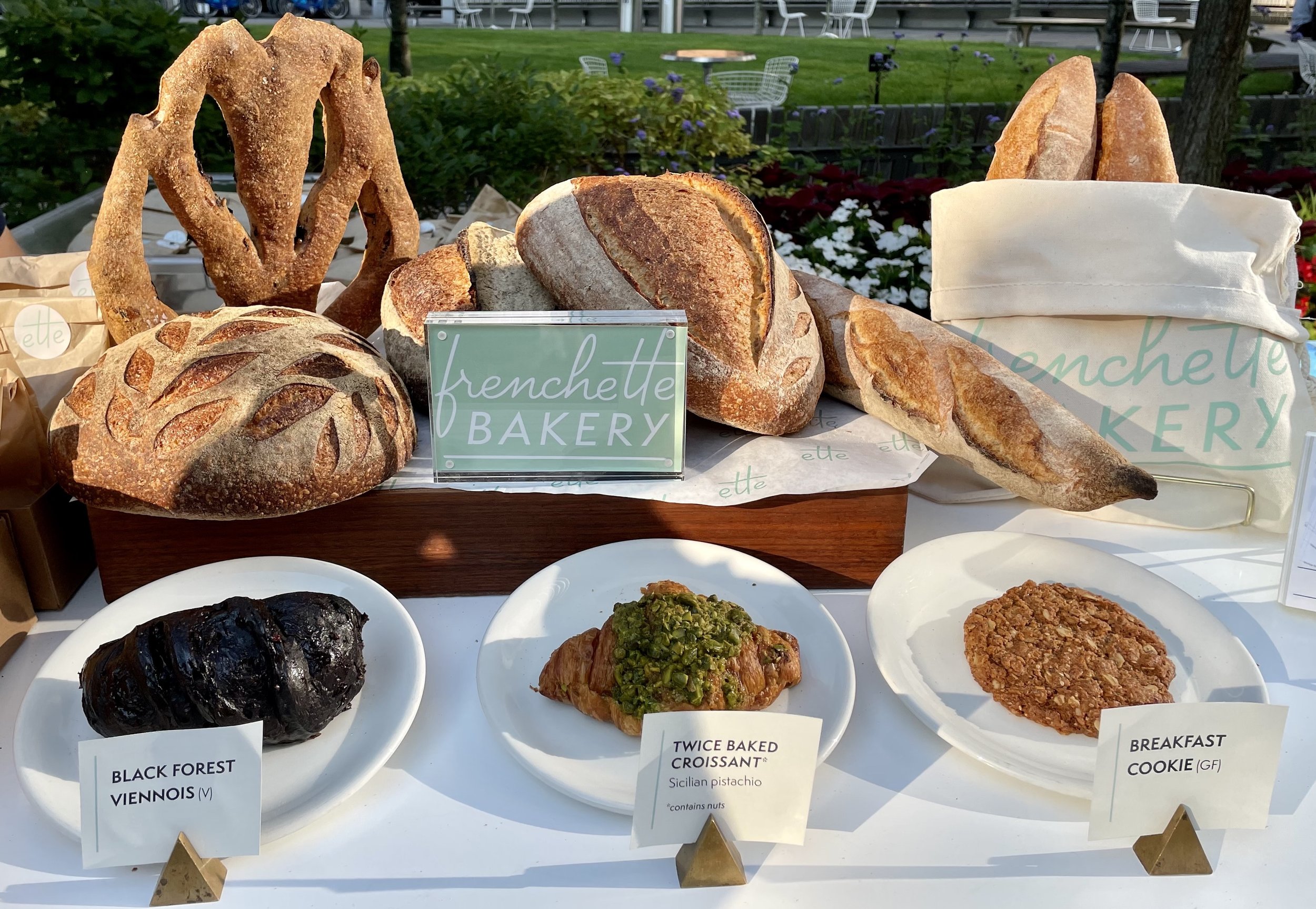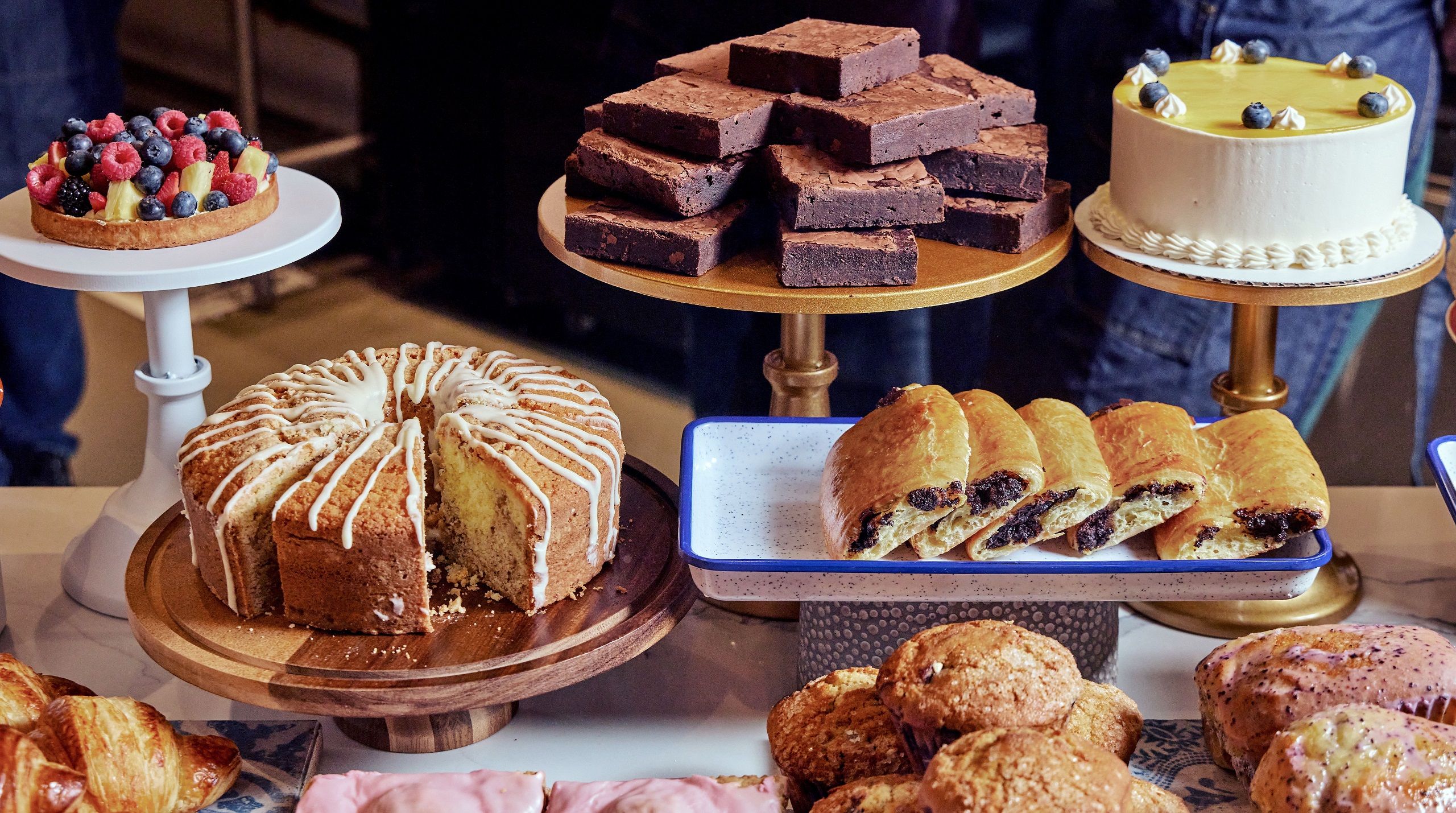Exceptional Catering Maddington Provider for Your Next Event
Exceptional Catering Maddington Provider for Your Next Event
Blog Article
Comprehending the Art of Pastry Shop Products: From Fresh Baked Breads to Alluring Pastries and Finger Foods
The elaborate art of bakeshop items includes a spectrum of strategies and ingredients that change standard components into cooking thrills. From the science behind the excellent loaf of bread, where fermentation and gluten growth play crucial functions, to the finesse required for developing layered pastries, each aspect discloses a compelling narrative of workmanship. The flexibility of finger foods illustrates just how flavor and texture can be artfully incorporated to involve diverse taste choices. As we discover these elements, one might question: what underlying principles regulate the success of these cherished productions?
The Scientific Research of Bread Making
At the heart of every loaf of bread exists an interesting interaction of chemistry and biology. The procedure of bread making starts with the mix of flour, salt, water, and yeast-- each ingredient playing a vital duty in the final product.
Yeast, a living organism, ferments the sugars existing in the flour, producing carbon dioxide and alcohol in the procedure. The carbon dioxide gas develops bubbles in the dough, creating it to climb and establish a light texture. The temperature level and humidity throughout fermentation significantly affect yeast task and, as a result, the bread's taste and structure.

Mastering Bread Strategies
Exactly how can one accomplish the delicate balance of appearance and taste that defines remarkable pastry? Grasping pastry strategies calls for a deep understanding of active ingredients, approaches, and the scientific research behind them. Fundamental to this craft is the choice of high-quality ingredients-- flour, butter, sugar, and eggs-- each playing an important role in the end product's flavor and appearance.
The strategy of lamination, which includes folding layers of dough and butter, develops the desired flakiness in pastries like croissants and puff bread. Accuracy in temperature is vital, as butter needs to remain cold to make certain ideal layers. Likewise, appropriate blending techniques, such as the creaming strategy for cakes, make certain also consolidation of air and fat, leading to a light and ventilated crumb.
Additionally, keeping the appropriate moisture degrees throughout cooking can dramatically affect the outcome, guaranteeing that breads rise correctly and attain that golden-brown surface. Finally, the art of bread likewise demands patience and practice; each effort enhances one's ability and understanding of the intricate equilibrium called for to develop tempting pastries that thrill the detects. Mastery in these strategies inevitably differentiates a skilled bread chef from an amateur.
Sorts Of Finger Foods
The globe of cooking delights extends beyond breads to incorporate a wide range of finger foods, which are commemorated for their ease and flexibility. These bite-sized deals with are excellent for celebrations, supplying a variety of flavors and appearances that deal with diverse tastes.

On the sweeter side, miniature tarts and bite-sized cupcakes supply a wonderful finish to any dish, attracting those with a sweet tooth. In addition, cheese and charcuterie boards act as a sophisticated option, permitting visitors to tailor their attacks with an array of meats, cheeses, fruits, and nuts.
Taste Profiles in Baking
Cooking is an elaborate dancing of flavor profiles that Your Domain Name integrates wonderful, savory, and umami notes to create an unified experience for the taste buds. Understanding these profiles is important for bakers looking for to elevate their developments.
Sweet taste usually acts as the foundation in baked products, with sugars, fruits, and natural sugar enhancing flavor depth. Active ingredients such as delicious chocolate and caramel introduce complicated sweet notes that can either dominate or enhance other flavors. Alternatively, savory components, usually located in breads and breads, offer equilibrium and contrast. Active ingredients like seasonings, cheeses, and herbs can transform a basic dough right into a complex flavor experience.
Umami, regularly ignored in cooking, plays a substantial duty in improving tastes. Active ingredients such as aged cheeses, fermented products, or perhaps particular nuts add to a savory depth that improves total taste.
In addition, the interaction of acidity from components like buttermilk or citrus zest can lighten up tastes, using this content a refreshing counterpoint to sweetness. By attentively incorporating these flavor accounts, bakers can craft items that resonate with varied tastes, creating an unforgettable cooking experience. Eventually, mastering taste profiles is key to technology on the planet of baking.
Important Cooking Tools and Active Ingredients
Recognizing taste profiles in cooking collections the phase for picking the right tools and ingredients that help with the development of remarkable baked goods. A trustworthy collection of cooking frying pans-- such as sheet pans, loaf frying pans, and cake pans-- is vital for achieving wanted forms and appearances.
Flour serves as the foundation of many recipes; choosing the best type-- be it all-purpose, bread, or pastry flour-- can significantly affect the end result. Cooking powder and cooking soft drink are vital for creating lift in pastries and cakes.
Furthermore, integrating flavor enhancers like vanilla essence, seasonings, and citrus zest can boost your productions. By making certain accessibility to these basic tools and ingredients, bakers can confidently start their cooking journey, crafting a diverse range of fascinating baked goods.
Conclusion
To conclude, the art of bakery products incorporates an extensive understanding of both innovative strategies and clinical concepts. Proficiency in bread making, bread prep work, and finger food presentation discloses the complex connections in between procedures and ingredients. Discovering diverse taste accounts improves the baking experience, while necessary devices and components supply the foundation for success. Inevitably, the captivating globe of baking navigate to this website grows on the harmonious interplay of science and imagination, leading to a myriad of delightful cooking productions.
Exactly how can one attain the fragile equilibrium of texture and taste that defines exceptional pastry? Basic to this craft is the choice of top quality active ingredients-- flour, butter, sugar, and eggs-- each playing a crucial duty in the final product's flavor and structure.

Understanding flavor accounts in baking sets the phase for picking the right tools and active ingredients that assist in the production of exceptional baked items. Exploring varied taste accounts enriches the baking experience, while essential devices and ingredients supply the structure for success.
Report this page